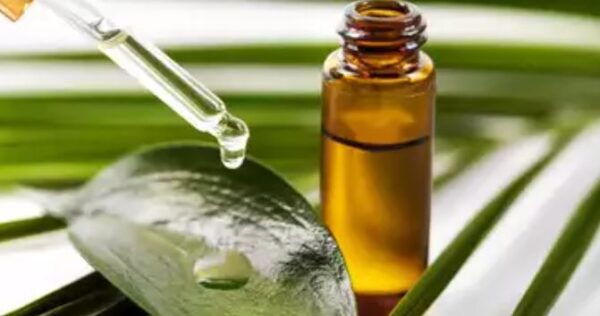Lifestyle
5 skin benefits of applying tea tree oil

Tea tree oil, derived from the leaves of the Melaleuca alternifolia plant, is a powerful antibacterial, antifungal, and anti-inflammatory.
Being first used by Native Australians for medical purposes, tea tree oil quickly spread worldwide to solve a variety of skin problems in an entirely natural way.
Here are five key benefits of applying tea tree oil on your skin, based on relevant scientific and practical evidence.
1. Helpful in treating acne
How it works
Tea tree oil is arguably the most famously used for its treatment on acne.
The principle of this product lies in that it kills the bacteria that cause acne outbreak or pimples. These bacteria are termed to be Propionibacterium acnes. Tea tree oil also shows anti-inflammatory properties that minimise the redness and swelling associated with acne lesions.
Application
Apply the diluted tea tree oil, mixed with the ratio of 1:10 in a carrier oil, such as jojoba or coconut oil, on a cotton swab to the affected areas. Make sure to do a patch test first to make sure you do not have a negative reaction to it. Consistent application will lead to fewer breakouts and clearer skin over time.
Research findings
While studies also prove that tea tree oil is as strong as benzoyl peroxide, a popular acne drug, but with more tolerable side effects like dryness and irritation. A study published in the Medical Journal of Australia showed that the 5% tea tree oil gel was effective enough at reducing acne lesions after 12 weeks of use.
2. Anti-oiliness skin
How it works
All these properties of tea tree oil actually control the overproduction of oil that usually precedes the development of acne. As an astringent, it reduces the oiliness but does not take moisture from the skin.
Application
To apply tea tree oil on oily skin, you can add a few drops to your daily moisturiser, or create a simple homemade face mask. Mix the oil with clay-be it bentonite or kaolin using a small amount of water to form a paste. Apply this paste on the face and then wash it off 10-15 minutes later to suck out all excess oils, leaving you with the feel of refreshed skin.
Research support
There is research stating that tea tree oil controls the secretion of sebum. This study in the Journal of Dermatological Treatment illustrates how this oil can be an astringent from natural origins; hence it may suit better those whose type of skin is perceived as oily.
3. Fights fungal infections
How it’s done
Tea tree oil fights several infections caused by fungi. Among them are infections like athlete’s foot, nail fungus, and ringworm. Its antifungal property makes it an alternative instead of using manufactured antifungals.
Application
Apply a few drops of this diluted tea tree oil combined with a carrier oil to the affected area. In the case of toenail fungus, you may soak your feet in a solution of warm water and tea tree oil for 20-30 minutes every day.
Evidence from research
A good number of research studies have demonstrated the antifungal efficacy of tea tree oil. In fact, according to one study in Clinical Microbiology Reviews, tea tree oil is very potent with huge antifungal activities against fungi thus an excellent natural remedy for persistent infections.
4. Relieves skin irritation and inflammation
How it works
The soothing action by tea tree oil on irritated skin makes it a good ingredient for conditions like eczema, psoriasis, and dermatitis. Because it calms redness and itching, it can be very effective.
Use
As the oil is harsh, the tea tree oil needs to be added only with a mild cream or a base oil if the skin is sensitive even or irritated. The cream can be applied directly to the affected parts whenever necessary. You can also apply soothing compresses to painful areas using a dilute solution of water and tea tree oil. Simply thin the oil in water, soak a cloth in it, and then apply the cloth over the inflamed areas.
Research support
Studies have proved that the oil of tea tree can significantly reduce inflammation in the skin. A clinical study in the Journal of Investigative Dermatology has demonstrated that application through topical means of the substance would heal the inflammation and also hydrate the patient’s skin better in dermatitis.
5. It is a natural antiseptic
Working mechanism
Tea tree oil is also an antiseptic and a very good addition to your regimen for minor cuts, scrapes, and insect bites. It will prevent infections and heal faster.
Application
With the pure essence, use tea tree oil as an antiseptic by diluting it with a carrier oil and applying it to minor wounds or insect bites. Clean the area first before applying the diluted oil using a cotton swab in order to achieve effective results. When applying it to large areas, you can dilute a few drops of the oil in your regular antiseptic ointment.
Research support
Several studies can demonstrate its antiseptic properties. In fact, a review in American Family Physician even highlighted that it has the potential to be potent against several types of bacteria that can facilitate the healing process overall.
However, it’s important to use tea tree oil the correct way by always diluting before application since this will prevent skin irritation. So, the introduction of this oil to skincare will tend towards giving someone even healthier and clearer skin while benefiting from the most potent remedy from nature. Any kind of skincare product should be consulted with a dermatologist, especially for those with sensitive skins and pre-existing conditions. Discover the benefits of tea tree oil and how you can change your skincare practice.










